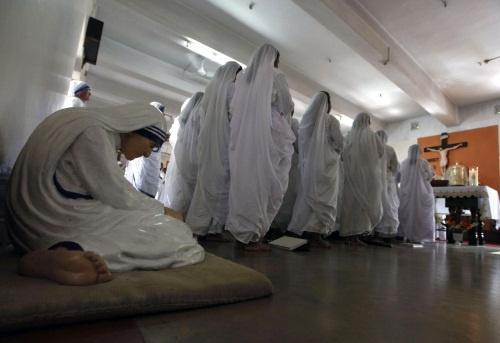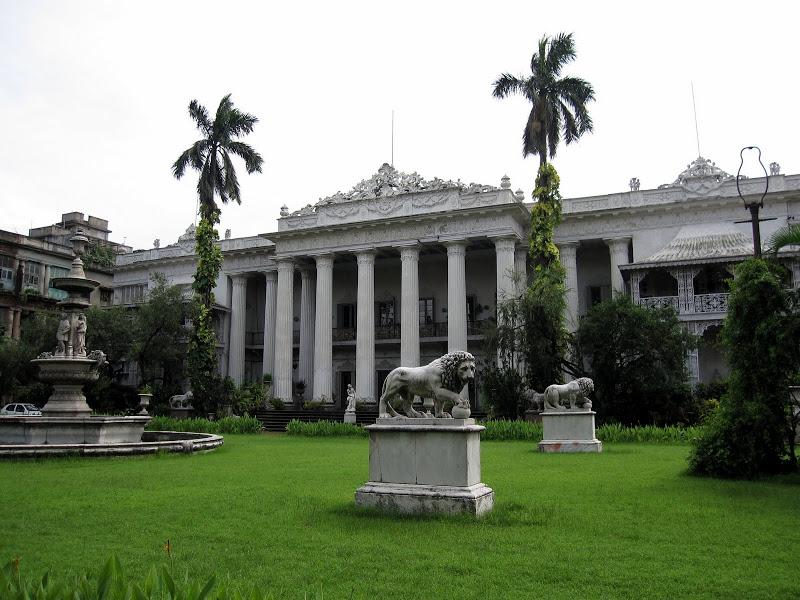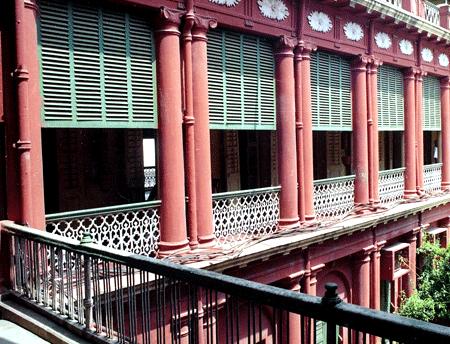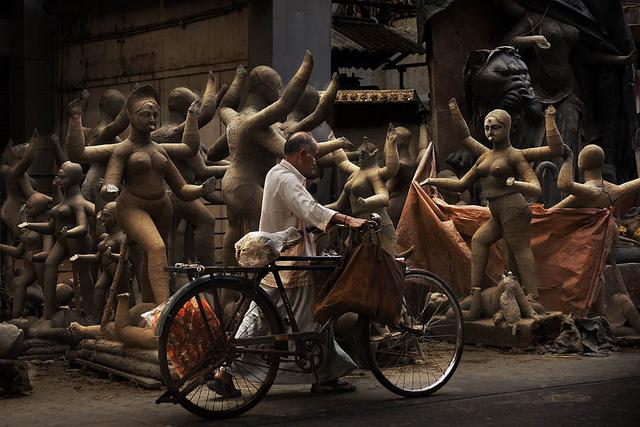



The city that produced the last Emperor of India
In their voyage to the Indian Ocean and Bengal, when the American fleet anchored by the eastern bank of the river Ganges; a town greeted them most solemnly. But, the perception of the American revealers soon turned to a colossal exposition of the so called town that greeted them at the river bank. In fact, a very expensive square opened before them, with a large expanse of water in the middle, for public use. The square itself was composed of magnificent houses, where one side of the square had a range of buildings occupied by persons in civil employments under the Company, such as writers in public offices. Such a rendering of an urban landscape had not only made this town the handsomest city in Asia but one of the finest in the world. The American travellers who were mesmerized by the beauty of the heritage of this Indian city in 1803 was none but the city of Calcutta, the first modern city of Asia and the second city of the British Empire, the largest empire in the then world.
The destiny of this city has never been an ordinary one, where the British explorers, after exploring more than half the world, envisioned engineering Calcutta, the capital of British India, and eventually, the second city of the empire. As you will walk around the city, amidst the concrete jungle of modern planning, the vestiges of its heritage past will be still there, for you to delight your sight and invigorate your senses to fathom how the city earned its name as the City of Palaces and also the City of Joy. These numerous palatial mansions built all over the city has phenomenally preserved the lingering air of the Raj era that still hang over the cobble stone sidewalks, tram lines running through the middle of the streets and the mammoth intermingling inlays of Neo-Gothic, Baroque, Neo-Classical, Oriental and Islamic schools of design. Surrounded by its splendid heritage, the City of Palaces welcomes you to its palatial mansions, wide boulevards, English churches, and grand formal gardens to name a few.
If it ever baffles you, about how the people from the far-away places built such a replica of their native land, you have to let loose in the rhythm of the beating heart of Calcutta, which had embraced and adapted the spirit of the time. The ability to mingle itself with the time, with all its riches and plights is perhaps the essence of this ever smiling city. And perhaps, this amiable nature of the city had always proved to be its mighty heart that sheltered personalities from places around her and from the remote lands. Till date, the pious vibration of these mighty souls and the ever cordial nature of the city have christened and maintain its legacy as the City of Joy. The very lively, friendly and loving nature of its citizens still prevails, which will prop your understanding, how the city became the City of Joy.
Unlike many north Indian cities, whose construction stresses minimalism, the layout of much of the architectural variety in Calcutta owes its origins to European styles and tastes, influenced by the British, the Portuguese and French. The buildings are designed and inspired by the tastes of the English gentleman around and the aspiring nouveau riche Bengalis, who aspired to cultivation of English etiquette, manners and custom. They were amongst the first ones, who welcomed the new English way and imbibed in their ancient and long living cultural bouquet of India. Dalhousie Square, which was created in the heart of the imperial capital of British India, was the source of germination, from where the city unfurled itself in the legacy of heritage and European grandeur. Calcutta greets you to explore the city in the footstep of the Raj and once again, relive the days of the city that produced the last Emperor of India.
We Only Sale Best 1:1 Rolex Replica Watches Online: All Kinds Of Best-selling Swiss Fake Rolex Watches Hot Sale!
Heritage Calcutta
Pick up from Esplanade: 07:00 am
Kalighat Temple: 07:30 am
As you make your way through the hidden alleys, jammed with the votive flower sellers, brassware, religious artifacts and of course pictures of Kali towards the ancient Tully’s Nullah, where the gaggle of temple monuments will celebrate the liberty of the souls, two blocks further you will reach a place, bearing the mythos from the antiquity. Amidst the enormous crowd of the image-makers, less famous than the Kumortuli, your senses will revive, at the door of temple complex of lively Kalighat. Travel in the spirit of the time of the Hindu epic, when the ancestor of all the yogis, the most ancient god, Lord Shiva was plausibly dismayed on the passing over of his newly married wife – Sati. Disdained by what happened his decision to destroy the world shook all the senses of all the gods in the heaven.
To avert the impending retribution by Shiva, Vishnu used his divine weapon – Shudarshan-Chakra, which, although, stopped Shiva’s ‘dance of destruction’, but finished Sati’s body into 51 pieces, creating 51 Shakti Peethas across India. Kalighat is the place, where one of Sati’s toe fell, to place the germinaton and evolution of the city, in the hands of divine destiny. One of the holiest Hindu spots grew in the thick of the jungle, the erstwhile Kalikata village – now known as Kalighat, which had the onus of the nomenclature of the city Calcutta, now known as Kolkata. As the legends say, one gory chunk of land fell into this place, a symbol revered as the toe Sati from the myths. The ancient Kali temple took its present shape in the year 1809, which is bedecked with floral and peacock motifs, giving it a Victorian look in its details, than that of the Hindus’. More than the architecture, the jostling crowd is much enthralling, which will fight for their chance to put the hibiscus flowers at the feet of the idol. To the east of the temple, there lies the pea-green holy pond and at the north fringe there still grows – the tree of fertility – awaits to usher her blessings, whoever seeks for it.
Birla Mandir: 08:00 am
Present day Calcutta, a city of extreme like no other, with staggering diversity in culture, religion, spirituality, and philosophy in a dazzling kaleidoscope of human existence. With much of its metamorphosis happening in her social fabric, its aesthetic emotions have also been manifested on the shifting art of the monumental legacy. One of the most striking evidence stands on Asutosh Chowdhury Avenue in Ballygunge, a Hindu Temple, known as Birla Mandir. This generously spread 20th Century temple complex, holds the magnetic view of the Laxmi Narayan Temple, propped up by cream-colored sandstone, with its corncob fashioned towers, attracting many souls in the horizon. More than size, the shape of the towers showcases the most ingenious spirit of the modern day temple building. As built by the industrialist Birla family, the temple adopted the family name, instead of the spiritual characters dwelling in it. As you approach its marble staircases, the abode of humankind will greet you in the morning from 5.30am to 11am and in the evening from 4 .30pm to 9pm, with its three shikhars or domes. Here Krishna and Radha reside in the main temple, goddess Durga – the embodiment of shakti at the left temple and the ancestor of all Yogis, the most ancient spiritual character –Shiva himself. The temple bears a close resemblance to the Lingaraj Temple of Bhubaneswar. The remarkable application of the narration styles of the ancient temple builders are captured by the architect Nomi Bose on the temple walls, through the pictorial story telling of the Bhagavad Gita.
Mother House: 08:30 am
A 15 minutes’ walk from Sudder Street to Alimuddin Street, and then 2 minutes to the south. It’s the second alley to the right, and you will reach the haven of the gentle soul. Mother House of the Missionaries of Charity’s welcomes a regular flow of pilgrims from varied faiths. It will heal your heart, as you will pay homage at the sober tomb of the blessed mother - Angel of Mercy. A small picturesque room, adjacent to the tomb, displays the worn sandals of mother. The battered enamel dinner bowl, kept by the sandals will humble your being. Away from the arrogant display of modern living, a room located upstairs, is the place, where she worked and slept from 1953 to 1997. The modest camp bed and an arcane airline rout-map, framed and hanging from the wall, with all-encompassing simplicity will take you back to innocence. The serenity of Mother Teresa still exists in the quietness of her soul.
Victoria memorial: 09:00 am
The implausible Victoria Memorial is an exquisite and elaborated symphony of white marble. An incredible combination of Mughal and Italian architecture reflects the staggering diversity; India had embraced for over thousands of years. The flamboyant display of the commemoration of Queen Victoria’s 1901 diamond jubilee can juxtapose your mind at the two different hemispheres of the world. Picture the US Capitol in Washington DC, and then, travel in time to Agra in India to merge it with the beauty of Taj Mahal – Victoria will emerge in the city of Calcutta. Now, a heritage site was sprung in 1921, which took 20 years to complete. Statues and busts of King Gorge V and Queen Mary, with other dignitaries will greet you, right from the hallway. To the left, the royal prints and paintings clad the lavish gallery in a splendid way. Through the Calcutta Gallery, the soaring Central Chamber still reflects the zenith of Britain. You will be surrounded by the carefully preserved colonial past of this enigmatic city. Nevertheless, if your soul wants to move out from the marble closet, the magnetic beauty of the memorial, amidst the sprawling gardens and water bodies reflecting the symmetrical structure of the Imperial era. By day, you can enter into this beauty through the north and south gate, with ticket booths on both the sides and to exit, you can use the east gate. As the evening descends upon the city, the dazzling sight of Sound-and-Light will astound your senses to the unexplored layers of your minds. This spectacular open-air canvas will entice you for 45-long-minutes, which starts its selling of tickets from 5pm at the east gate.
St Paul’s Cathedral: 09:45 am
Built on the delta of attraction, the verve the city adds on to the Angelical beauty, at its central neighborhood of heritage and culture. The divine cathedral is the Church of North India, which props the seat of the Diocese of Calcutta and its incumbent bishop. The colossal abode of Thee, is situated favorably amidst the heritage and stately structures and lush green meadows and gardens. The most organic area of the city is the lungs of Calcutta. Leaving Birla Planetarium on your left, as you enter a modestly fashioned entrance, the towering height of central crenellated tower of St. Paul’s will embrace you in the divinity of compassion, with quite a home in Cambridgeshire in the air. Built between 1839 and 1847, it is decorated by a remarkably wide nave. The west window is fashioned by the stained-glass window by the signature pre-Raphaelite maestro Sir Edward Burne-Jones. The pristine floral designs, with exquisite mural painting add character to the quality of the beauty that captures the beholder. As the church is closed between 3pm and 6pm, you may stroll through or spend some languid moments, amidst the intellectual gatherings of the city crowd. Nandan and Rabindra Sadan Theater complex, along with Academy of Fine Arts can make your day with soulful experiences. By evening, you may either head for the Light and Sound at Victoria or celestial shows in Birla Planetarium, to be in the cosmic presence, in the comfort of your chair.
Marble Palace: 10:15 am
An opulent mansion of 19th Century Calcutta bears the witnesses of the marching time and spirit of an aesthetic being. Located in North Calcutta at 46, Muktaram Babu Street, the well preserved elegance will embrace you to its marble walls and floors, from which the palace espoused its name. The manor reflects a beyond the limit Bengali imagination, in the strangest manifestation of inspiration, of Raja Rajendra Mullick Bahadur, a landed gentry of Bengal. Lavishly built in Italian marble, the 1855’s palace treasures a collection of epoch, scattered in the lawn can put you in the time travel with the sculptures of lions, the Buddha, Christopher Columbus and Jesus the Virgin Mary, and numerous Hindu gods and goddesses. The architectural grandeur showcases the Bengali creativity in inspiring the building inlay in neoclassical style, coupled with its open courtyard, largely a traditional Bengali style that hold a thakur-dalan, for the family members to worship in the Hindu way. This three-storied building stands tall with its fluted Corinthian pillars, over which, lean the ornamented verandas with fretwork and sloping roofs, mingling in the style of a Chinese pavilion. The structure is surrounded by gardens with lawns, rock garden, a lake and a small zoo.
Jorasanko Thakur Bari & Rabindra Bharati University (Tagore Museum) : 11:00 pm
As the two (jora) wooden or bamboo bridges (sanko) spanned over a small stream at the erstwhile Mechuabazar neighborhood of North Calcutta, the city adopted the identity in activity. With the metamorphosis in name to Jorashankho, the dwelling of the Thakur family became popular as the Jorasanko Thakur Bari. It is the abode of the creator and philosopher, for whom the modern Bengal at its hiccup, harked with hope. The frequencies of the universe or will of god, whatever it may be, from Calcutta to Bengal and India to the world, the apostles have had the philosophies to steer the humankind for a greater good. An exponent of the Bengal Renaissance, who didn’t repudiate to decline the knighthood over the stature of nation, Gurudev Rabindranath Thakur, as Anglicized to Tagore, was born and lived here. More than a house, it is a cultural symbol of India and world, which nurtured the first Non-European Nobel Laureate in Literature. The impression of which are still living as an impressive Tagore Museum and Rabindra Bharati University of fine arts, connect us to the humanists and Universalists in us, to the call of greater good and universal tolerance. Till-date, the nations of Indians and Sri Lankans revere the bearings Tagore as their anthem for the nation.
Shobhabazar Rajbari: 11:45 am
Have a lavish noon in one of the most flamboyant royal palaces of the zamindar - Raja Nabakrishna Deb of the then Calcutta. The palace falls in the pioneering list of the elite houses of the North Calcutta. Once, a modest man, the raja amassed a massive wealth from the British Raj for tendering his aid to topple the Nawab Siraj ud-Daulah from his throne. The acquired wealth, eventually, let Calcutta have in her list of mansions, two more royal properties, the Choto Shobhabazar Rajbari at 33 Raja Nabakrishna Street and Baro Shobhabazar Rajbari, popularly known as the Shobhabazar Royal Palace at 33 Raja Nabakrishna Street. This splendid and colossal architecture will be a treat for your eyes, constructed as a saat-mahala house. The most intact and breather inlay of the estate is the courtyard, with thakurdalan, which still greets the goddess Durga every year, during one of the most elaborate festivals of India – the Durga Puja or Pujo, as the Bengalis beckons it throughout the world. The grandeur of the palace is centered to the saat khilan thakurdalan, bedazzled with multi-foliate arches propping pairs of squared pilasters. Between the arches, rise the pairs of columns to support the entablature above.
Kumortuli: 12:15 pm
A living legacy and one of the wonders of Calcutta, still breathes at the northern part of the city. Kumortuli, also known as Kumartuli or in the archaic way, Coomartolly is the traditional potters’ quarter of Calcutta. The only one in the world, it is the only dwelling of the clay idol makers in the country, where life is infused in the idols of Hindu gods and goddesses with immaculate precession that is mesmerizingly natural in its bearings. The place is the living testimony of the virtue of artistic bend with which the potters are bestowed, which transformed them from the obscurity of the folklore art to the prominence of global podium. This Calcutta neighborhood supplies the clay idols of Hindu gods and goddesses to the innumerable barowari pujas in Calcutta and other states of India and exports an ample of those overseas. The daily activities of this area reflect the length and breadth of the Hindu festivity, which lives round the year.
Maniktala Jain Temple: 12:45 pm
Amidst the old streets of North Calcutta, teeming with life and commotion of the modern time, a set of three Jain Temples at Raja Dinendra Road in Maniktala is a visual bouquet. The best-known Sheetalnathji Temple, built in 1867 by an art enthusiast - Ray Badridas Bahadur, evokes the natural sense of art and appreciation. The dazzling, yet unrefined work of colorful parody that sets the mosaics, spires, columns and splintered figures on the temple architecture creates the Gaudi’s art of Catalan Modernism. You can travel back to the time of Indian religious reformations, as you pave through the southern gateway arch of the Pareshnath Jain Temple Complex to visit the serine seat of Sri Sri Channa Probhuji Mandir. The composed Dadaji Jain Mandir of 1810 beckons for its central marble tomb-temple pattern, bedecked with silver studs, is a tantalizing feeling that can squat your mind amidst gardens of the temples, which isolates its majesty from the everyday Calcutta.
Lunch break at BhojoHari Manna or Star Theatre: 01:30 pm to 02:30 pm
College Street (Boi Para) & The Indian Coffee House: 03:00 pm
Moving away from the humdrum of the MG Road, the erstwhile Harrison Road in Central Calcutta, down to College Street, towards Ashutosh Museum, take a block left and reach for the fourth door on your left to get the stairway to the nostalgic cafeteria. Although, the cheap dishwater coffee is not the precious calling, but enjoying the ambient and having the feeling of being there is perversely fascinating. The unpretentious high-ceilinged cafeteria imbibes the spirit of the time, once, where the freedom fighters, revolutionaries and bohemians used to gather, to exchange the harvest of the minds. The vibration of the Bengali intellectual heydays, surprisingly still exists in the Indian Coffee House, the erstwhile Albert hall, colloquially known by the Calcuttians, as Coffee House, will quench your thirst for the caffeine with a shot of Bengali intelligentsia. When you are quite done, stroll a bit, down the narrow College Street book market. The denizens are known for their love for books, which caption your imagination to reality, with the lively crowd of every day bookworms, spending hours bargaining for new and old books. Some of the most acclaimed educational institutions like University of Calcutta, Presidency University, Calcutta Medical College and Sanskrit College, which bred numerous prodigies of the nation and world are sparsely located in these streets.
En-route Heritage Buildings of BBD Bagh & Drop at Millennium Park: 03:30 am
History affirms that the marshy bayou - Sutanuti that harbored the sail of Job Charnock on 1668, had been inhabited for over 2 millennia. From Sutanuti , Gobindpore and Kalikata, a city flourished in the grandeur of European vision - Calcutta. Benoy, Badal and Dinesh Bag, the erstwhile Dalhousie Square - heart of the then capital of British India created a colossal spate of stately structures. Walk through the conscious influence of frenzies that engineered the heritage of Calcutta in the intermingling inlays of Neo-Gothic, Baroque, Neo-Classical, Oriental and Islamic schools of design. Surrounded by the palatial mansions, the city of palaces welcomes you to its manors, wide boulevards, English churches and grand formal gardens, around General Post Office, Eden Gardens, High Court, Writers’ Building, Netaji Indoor, Shahid Minar, to name a few.
EVENING CRUISE: 04:00 pm to 07:15 pm
After all the triumphs and debacles, as the Sun beats the retreat to the mighty Ganges, sit back and realize your search of self-in-travel under the rust evening sky, with mild breezing, and lit up twin cities at both the banks of the holy waters. Amidst the bustling cities, gently sail up-stream to anchor at the feet of the philosopher and apostle of the creator of divine generation of our time, the revered seat of Sri Ramakrishna at Belur math. The magnetic vibration of the Sandhya Aarti will capture your hear in the eternity. Let a serene evening conclude your day, much adored, with a gentle sail to the depth of spirituality.
Drop to Esplanade
As the troubled century draws to its close, we, in Travel and Tourism Corporation Ltd. (TTC) embrace the philosophy that nurtured one of the earliest of the great civilizations in the world. We strive to define the goals of the civilized life in a very different way. While living at the abyss of the dreadful age of anxiety, away from individualism, materialism, rationality and masculinity as the ideals of modern living, we hark and tender you some of the oldest callings of India – peace to soul, harmony in sharing and realizing the nature of reality. All these and more, we offer you in the symbiosis of the spirit of the time, as you discover your soul, through the traveler in you.
Be it a jungle safari, enjoying finest gourmets with the maharajas, leaving your trails on the pristine beaches, or getting lost in the deep woods, TTC offers you an all-inclusive travel experience, with its extensive list of tie-up hotels, resorts and travel services, so that you enjoy the mesmerizing hospitability, with a lasting impression. To celebrate the human life in the age of loneliness, as concerns are trying to touch your soul, we at TTC, are realizing the tantalizing imagination of technology, to touch your spirit. Claim your sphere in the concern of the spirit, to cherish the amazing continuity of life, called experience.
Fulfilling, one of the most unique technologies of the modern day communication, TTC offers you the travel companion, to pass through like a flow of timeline, with tantalizing glimpses of your bountiful life. Avail the unique smart card technology to store and use information, as an aid to your itinerary. Scheduling your plan, make your bookings, or editing your schedule, all in one touch, using your smart card, with a dedicated login identity and password. Experience the plenty, in the premium and budget hotels with endless privileges, clubbed with the evolved communication technology of the TTC smart card.
Official Swiss Replica Rolex Watches Store: UK Top 1:1 Super Clone Rolex Fake Watches With Swiss Movement Site Online!
UK Best Replica Watches Online Site: replica watches uk

Terms & Conditions Applied:
For Booking & Reservation
Contact: +91 33 4046 4646
E-Mail: reservation@justbyebye.com
Forever Replica Watches Store UK replica watches uk
Swiss cheap uk rolex replica watches are featured with the best quality for men and women.
 Loading..
Loading..